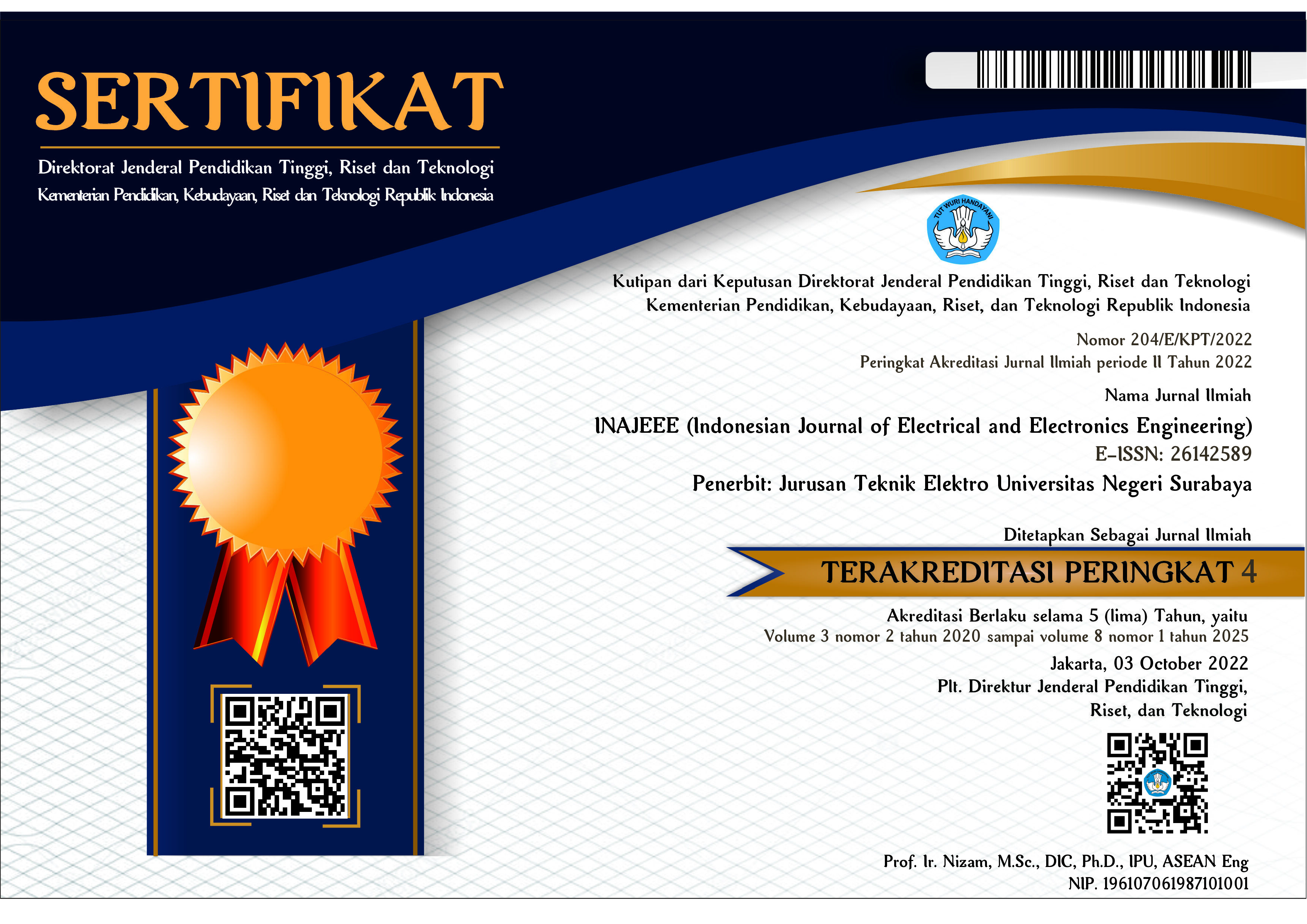Analysis of the 20 kV Distribution Network System Reliability Index Technically and Economically Using the Section Technique Method and RNEA at the Margorukun Feeder
DOI:
https://doi.org/10.26740/inajeee.v8n1.p32-40Abstract
The growing demand for electrical energy in line with Indonesia's economic growth and societal welfare requires a reliable distribution system. To support distribution in industrial, urban, business, and daily life contexts, a dependable system is needed to channel electrical energy to consumers. This study aims to analyze the reliability of the 20 kV distribution system using the Section Technique method and the RNEA method, from both technical and economic aspects. The assessment is conducted based on the SPLN 68-2:1986 and IEEE 1366-2003 standards, focusing on the Margorukun feeder in 2023. The calculations show that the SAIFI value using the Section Technique method is 1.14 times/customer/year, which meets the SPLN 68-2:1986 standard and is close to the IEEE 1366:2003 standard. Meanwhile, the RNEA method results in a SAIFI of 2.66 times/customer/year, which meets the SPLN 68-2:1986 standard but does not reach the IEEE 1366:2003 standard. For SAIDI, the value obtained from the Section Technique method is 4.47 hours/year, while the RNEA method reaches 6.84 hours/year; both meet the SPLN 68-2:1986 standard but do not meet the IEEE 1366-2003 standard. In terms of CAIDI, the Section Technique method shows a value of 3.92 hours/customer/year, better than the RNEA method at 2.57 hours/customer/year; however, both do not meet the IEEE 1366-2003 standard. The evaluation of ASAI and ASUI indicates that the Section Technique method is superior in service availability and reliability. Further analysis related to EENS and AENS shows that the Section Technique method is more effective, with EENS values of 49.842935 and AENS of 0.011431, compared to the RNEA method, which reaches 55.420674 and 0.012711, respectively. The economic losses calculated from the Section Technique method amount to IDR 72,008,089.35, while the RNEA method shows higher losses of IDR 80,068,247.50. The results of this study indicate that the Section Technique method is more reliable and effective in evaluating the reliability of the Margorukun feeder compared to the RNEA method, although both do not fully meet the IEEE 1366:2003 standard.
Downloads
Published
Issue
Section
License
Copyright (c) 2024 INAJEEE (Indonesian Journal of Electrical and Electronics Engineering)

This work is licensed under a Creative Commons Attribution-NoDerivatives 4.0 International License.
 Abstract views: 198
,
Abstract views: 198
, PDF Downloads: 189
PDF Downloads: 189



